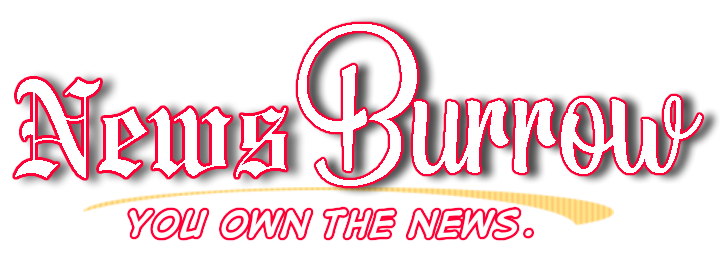Deceptive Made-for-Advertising Sites
Unmasking the Grift: Deceptive Made-for-Advertising Sites Exposed
Deceptive Made-for-Advertising Sites continue to challenge the digital advertising landscape.
Unmasking the Web of Deception: The Dark World of Made-for-Advertising Sites (MFAs)
In an age where digital advertising has become synonymous with the online experience, a sinister underbelly of the internet has emerged. The very platforms we rely on for information and entertainment are being infiltrated by deceptive Made-for-Advertising Sites (MFAs). Originally published on June 26, 2023, this article has been updated to shed light on the growing menace of MFAs and their crafty methods of luring gullible advertisers into their web of trickery.
The Web's Deceptive Mask
Imagine navigating a web page filled to the brim with towering banner ads and strategically placed video players, all vying for your attention. This chaotic cacophony of commercialism might seem like a digital nightmare to the discerning human eye. However, behind the scenes, the very algorithms that facilitate ad purchases perceive these sites as golden opportunities. They promise more visibility and, crucially, a cheaper advertising option compared to their counterparts. It's no surprise that advertisers fall into this trap.
The Programmatic Predicament
At the heart of this issue lies programmatic advertising, a realm where algorithms determine the placement and purchase of digital ads. Advertisers are lured by the promise of affordable media of seemingly high quality. However, this “quality” is often measured by superficial success metrics such as cost per viewable impressions, which prioritize quantity over genuine business outcomes. Astonishingly, many marketers are willing to sacrifice true engagement for these seemingly cost-effective options, inadvertently giving rise to MFAs.
The Thin Line Between Deception and Legitimacy
Labeling MFAs as outright fraud can be tricky. Industry standards tend to spare them from being categorized as invalid traffic (IVT). MFAs do attract real users engaging with genuine content, but the catch is that this engagement is usually short-lived. It's a result of traffic being acquired through content recommendation companies rather than being genuinely earned. Consequently, MFAs walk a fine line between legitimate traffic and potential IVT, leaving marketers investing in ads that barely influence consumer behavior.
Damon Reeve, CEO of the U.K-based publisher alliance Ozone, aptly observes, “MFA sites are a great working example of a programmatic system being gamed. Advertisers don't like them, publishers don't like them, and yet advertiser budgets still flow to them.”
The Enigma of Scale
One might wonder how pervasive MFAs truly are in the digital landscape. The reality is, no one can provide a definitive answer. Programmatic advertising, by nature, is a complex and elusive ecosystem. However, available data paints a grim picture. The Association of National Advertisers (ANA) examined programmatic ad dollars and found that MFAs accounted for a staggering 21% of the audited 35 billion impressions, equivalent to 15% of the $123 million spent by 21 advertisers.
This revelation is deeply concerning, considering that the ANA's findings pertain specifically to a section of the programmatic open marketplace, where real-time bidding auctions determine ad purchases. MFAs have now extended their reach into private marketplaces, supposedly meant to offer premium inventory.
The Illusion of Premium Inventory
Private marketplaces, in theory, should be a sanctuary for premium inventory, free from questionable content. But, in practice, this is far from the truth. Recent findings by programmatic consultancy Jounce Media have unveiled a disturbing trend. Out of 136 multi-seller private marketplaces examined in the past 90 days, a staggering 106 included MFA inventory. Shockingly, 23 of these allocated over 25% of their budget to MFA inventory. Rather than being premium, these marketplaces resemble a bait-and-switch tactic, luring unsuspecting advertisers only to serve subpar offerings.
A Call for Action Amidst the Talk
Opinions on this issue may vary, but the conversations surrounding MFAs have reached a fervent pitch. Ad executives emphasize the need to prioritize high-quality media over low-cost, low-value inventory. Marketers express their frustration with ad tech vendors for permitting MFAs to thrive, while consultants advocate for a shortlist of trusted sellers.
Yet, all this discussion amounts to mere words. To enact real change, the industry must adopt meaningful key performance indicators (KPIs) that measure campaign success aligned with tangible business metrics. This paradigm shift threatens the very foundation on which MFAs persist but is essential for cleansing the digital advertising landscape.
Damon Reeve succinctly summarizes the path forward, stating, “Acknowledging MFAs are nothing more than a vehicle for gaming a system, and investing in the alternative — proven channels that deliver real and sustainable business results — will be a wonderful milestone for brands.”
Will Marketers Rise to the Challenge?
The burning question remains: Will marketers confront the MFA menace head-on? History suggests otherwise. Despite numerous opportunities, marketers have consistently fallen short in curbing the proliferation of MFAs. Recent developments indicate that MFAs are poised for continued growth, with ad tech vendors now embracing them, leading to a surge in sales opportunities for deceptive impressions. Publishers, too, are jumping on the bandwagon, employing MFA specialists to maximize their ad revenue. These sites are also excelling at acquiring traffic at astonishingly low costs, further complicating the issue.
Lou Paskalis, chief strategy officer at Ad Fontes Media, proposes a potential solution, suggesting that arriving at an industry consensus on what constitutes a “made for advertising” website could alleviate the problem. The Media Ratings Council (MRC) currently considers these sites generally brand-safe but not suitable due to their abysmal user experience.
As the landscape evolves, the battle against MFAs rages on. One thing is certain: Deceptive Made-for-Advertising Sites are a menace that demands vigilance, innovation, and a united effort to reclaim the integrity of digital advertising.
Join the conversation by sharing your thoughts on this pressing issue. Your insights could be the catalyst for change in the digital advertising sphere.
By Ava Roberts, NewsBurrow Press Team
Unmasking the Grift: Deceptive Made-for-Advertising Sites Exposed
In a world where the digital landscape is fraught with deceptive made-for-advertising sites (MFAs), it's essential to equip yourself with the right tools to navigate this treacherous terrain. We've delved into the intricate web of these cunning sites, shedding light on their deceitful practices and the challenges they pose to both advertisers and users alike. But knowledge is just the first step; now, let's take action.
As you've discovered, the prevalence of MFAs in the digital advertising ecosystem is a pressing concern. These sites continue to lure unsuspecting advertisers into their intricate schemes, all the while jeopardizing the integrity of online advertising. To counter this menace effectively, it's time to consider a solution that puts the power back into your hands: Ad Blockers.
Ad Blockers are your shield against the chaos of cluttered ads and questionable content that pervade the digital landscape. By implementing Ad Blockers, you can regain control of your online experience, ensuring that your browsing remains focused, uncluttered, and secure. These tools are not just a means to block intrusive ads; they represent a fundamental shift towards a cleaner, more user-friendly digital environment.
As we delve deeper into the labyrinth of MFAs and explore potential remedies, remember that Ad Blockers are your ally in this battle for transparency and quality in online advertising. In the upcoming sections, we will introduce you to some of the finest Ad Blockers available today, each meticulously selected to enhance your online experience. So, keep reading to discover how these tools can empower you in the fight against deceptive MFAs, all while enhancing your online journey.
Shop Products On Amazon
Products From Amazon
Shop Products on Ebay
Trending Similar Stories in the News
Companies warned about consequences of loose use of consumers ... - Federal Trade Commission News
September 18, 2023 - Federal Trade Commission NewsCompanies warned about consequences of loose use of consumers Federal Trade Commission News...
Attorney General Bonta Announces Lawsuit Against Oil and Gas ... - California Department of Justice
September 16, 2023 - California Department of JusticeAttorney General Bonta Announces Lawsuit Against Oil and Gas California Department of Justice...
California lawsuit says oil giants deceived public on climate, seeks funds for storm damage - KTLA Los Angeles
September 17, 2023 - KTLA Los AngelesCalifornia lawsuit says oil giants deceived public on climate, seeks funds for storm damage KTLA Los Angeles...
Trending Videos of Deceptive Made-for-Advertising Sites
Native Ads: Search- vs. Content Arbitrage (Google AdSense) – The Differences
Arbitrage is very common in native advertising (Taboola, Outbrain, Yahoo Gemini, MGID), but just a few people are really ...
$1,090 Per Click? High Profit Adsense Money Keywords (Full Course)
100 High Profit Money Keywords Making More Than $100 Per Click $1090 per click... how does adsense and ezoic pay per click ...
Similar Posts, Popular Now
Apple China business relations
Pakistani Man's Beliefs














GIPHY App Key not set. Please check settings